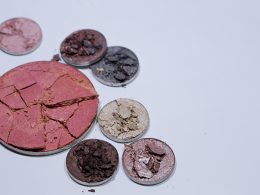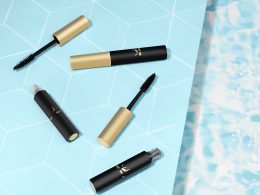Introduction:
In the ever-evolving digital age, social media platforms have become an integral part of our daily lives. Among the multitude of applications, Snapchat stands out for its fun and quirky features, notably its diverse array of facial filters. These filters, augmented reality overlays that transform users’ faces into anything from puppy dogs to elegant butterflies, have gained immense popularity. However, this surge in the use of filters has given rise to an alarming phenomenon known as Snapchat Dysmorphia, significantly impacting perceptions of beauty and self-image.
In this article, we embark on a journey guided by Rose-Marie Swift, a seasoned observer of beauty trends. We seek to unravel the intricate relationship between Snapchat Dysmorphia and the evolving beauty ideals in our digital era. The ubiquitous presence of filters in our lives has blurred the lines between reality and digitally altered perfection, prompting us to explore the ramifications of this transformation.
The Digital Mirage: Filters in the Spotlight
Social media platforms, particularly Snapchat, have witnessed an unprecedented surge in the use of filters. These filters, often playful and whimsical, allow users to modify their facial features, skin tone, and even create fantasy-like environments. The allure of filters lies in their ability to instantly enhance one’s appearance, providing a digital mask that seemingly aligns with contemporary beauty ideals.
The seamless integration of filters into our daily social media routine has normalized the perception of an altered reality. It has subtly shifted our understanding of what is considered ‘normal’ or ‘beautiful.’ Users, influenced by the widespread use of these filters, start to perceive their digitally enhanced selves as the standard of beauty to aspire to.

Snapchat Dysmorphia: A New Twist in Self-Image
Snapchat Dysmorphia, a term coined in recent years, describes a phenomenon where individuals seek to undergo cosmetic procedures to resemble the augmented versions of themselves depicted in their favorite filters. It marks a paradigm shift in our perception of beauty, where a digitally altered version becomes the new ideal.
This desire to look like a filtered image is driven by the constant exposure to these digitally perfected versions of ourselves. As users interact with filters daily, they become accustomed to the flawless skin, larger eyes, and altered facial features, creating an unrealistic beauty standard that fuels the aspiration for similar appearances in reality.
The Impact on Beauty Ideals: Unrealistic Expectations
The rise of Snapchat Dysmorphia has given birth to a set of unrealistic beauty ideals. Users, especially the younger generation, are increasingly dissatisfied with their natural appearance as they compare it to the digitally perfected versions showcased on social media platforms.
These unrealistic expectations can have detrimental effects on one’s self-esteem and mental well-being. Constant exposure to unattainable beauty standards may lead to feelings of inadequacy, perpetuating a cycle of low self-esteem and body dissatisfaction.
The Psychological Toll: Self-Esteem and Mental Health
The impact of Snapchat Dysmorphia on mental health is a growing concern. Individuals who constantly seek to align their appearance with filtered images may experience anxiety, depression, or body dysmorphic disorder (BDD), a condition characterized by an obsessive focus on perceived flaws in appearance.
The altered self-image created by filters can distort one’s perception of themselves, leading to a disconnect between their digital persona and their true identity. This discordance between reality and the digital representation of self can cause psychological distress, contributing to mental health issues.
Empowering Authenticity: Reclaiming Beauty Ideals
In a world where filters and digitally enhanced images dominate social media, it is imperative to foster a culture of authenticity and redefine beauty ideals. We must encourage individuals to embrace their natural selves and celebrate their unique features.
Building self-esteem beyond filters involves promoting self-acceptance and teaching individuals that beauty comes in various forms. Responsible use of technology is essential in this pursuit, encouraging users to understand that filters are for entertainment and creativity, not a blueprint for real-life beauty.
Conclusion
Snapchat Dysmorphia and the omnipresence of filters have significantly shaped contemporary beauty ideals. The line between reality and digitally altered perfection has become increasingly blurred, impacting self-perception and mental well-being. To mitigate the adverse effects of Snapchat Dysmorphia, we must prioritize authenticity, emphasizing that true beauty is diverse and should be celebrated in its natural form.
As we navigate the digital landscape, let us remember that self-esteem should be nurtured from within, not as a reflection of a filtered image. Through responsible use of technology and a conscious effort to embrace authenticity, we can redefine beauty ideals and promote a society where every individual feels confident, accepted, and beautiful just the way they are.












